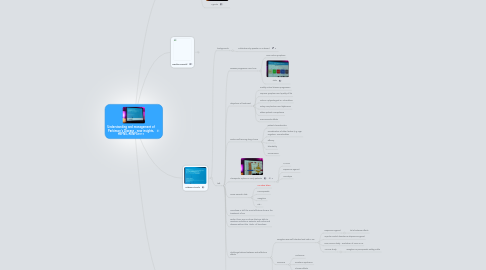
1. Chairman: Olivier Rascol
1.1. panel
1.2. Agenda
2. Günther Deuschl
2.1. Backgrounds
2.1.1. Publications by speaker on Pubmed
2.2. talk
2.2.1. Hoehn Yahr staging
2.2.1.1. Slide image
2.2.1.2. Slide image
2.2.1.3. slide image
2.2.2. Preclinical phase of PD
2.2.2.1. Hilker et al Arch of NEurol 2005
2.2.2.2. RBD
2.2.2.3. Constipation
2.2.2.4. Hyposmia
2.2.2.5. Atipcal tremors
2.2.2.6. Autonomic symptoms
2.2.3. Disease modification - preclinical definitions
2.2.3.1. Neuroprotection
2.2.3.1.1. interventions to prevent cell death to slow disease progression
2.2.3.2. neurorescue
2.2.3.2.1. dying neurones are rescued by reversol of established metabolic abnormalities
2.2.3.3. neurorestoration
2.2.3.4. compensatory mechanisms
2.2.4. Disease modification - clinical standpoint
2.2.4.1. clinical outcome/defined endpoint
2.2.4.2. surrogate markers may support the determination of disease modifying effects
2.2.5. Untangling drugs with different effects
2.2.5.1. Natural disease progression
2.2.5.2. symptomatic
2.2.5.3. disease modifying
2.2.5.4. symptomatic + disease modifying
2.2.5.5. How to bring the above into studies
2.2.5.5.1. L-dopa - DATATOP study
2.2.5.6. Withdrawal study
2.2.5.6.1. short term medication effect
2.2.5.6.2. long term effects of medication
2.2.5.7. Surrogate markers?
2.2.5.7.1. DAT scanning
2.2.5.8. Delayed start design
2.2.5.8.1. Placebo group
2.2.5.8.2. Rasagiline treatment
2.2.5.8.3. Disease modifying effet after 36 weeks...
2.2.5.8.4. ADAGIO study
2.2.5.8.5. We are waiting for ADAGIO follow up study
2.2.5.9. PROUD study
2.2.5.9.1. delayed start trial w the DA agonist pramipexole
2.2.5.10. TEMPO study - signal of potential disease-modifying effect of rsagiline
2.2.5.10.1. TEMPO long-term extension
2.2.5.11. How do we progress towards improved treatment strategies?
2.2.5.11.1. missed
2.2.5.12. Summary - slide
3. Oliver Rascol
3.1. Backgrounds
3.1.1. Author on Pubmed
3.2. talk
3.2.1. slide
3.2.2. slide
3.2.2.1. full image of slide
3.2.2.2. close up
3.2.3. Why is it important to understand the progression of PD in its early stage?
3.2.3.1. to have a better progrnosis of PD
3.2.3.1.1. to try to stop or slow down disease progression, keeping the patient in the pre-symptomatic phase for as l ong as possible
3.2.3.2. to provide more appropriate counselling to patients
3.2.3.3. to help choose between the different early treatment options
3.2.3.4. to design better disease modification trials
3.2.4. Disease progress in beginning faster than later in disease course seems to happen
3.2.4.1. Post-mortem studies suggest a faster rate of cell death in early PD than in late PD
3.2.4.1.1. Fearnley, brain 1991
3.2.4.2. Neuro-imaging observations suggest a faster rate of degeneration in early PD than in late PD
3.2.4.2.1. Pirker 2003
3.2.4.3. Previous clinical trials in mild, untreated PD report placebo progression rates of 8-12 UPDRS units/year
3.2.5. slide
3.2.5.1. detail on references
3.2.6. ADAGIO
3.2.6.1. Main adagio objective: to prospectively examine rasagiline as a disease modifying therapy in PD
3.2.6.2. objective of placebo progression analysis: to describe the natural progression of clinical symptoms in a large cohort of early patients w PD
3.2.6.3. Rate of progression in placeboa arm of ADAGIO was slower than anticipated from previous clinical trials in mild, untreated PD
3.2.6.3.1. slide
3.2.6.4. ADAGIO placebo progression analysis - patient disposition
3.2.6.4.1. of the 595 patients initially randomised to placebo, 588 were included in analysis, sungroups analysis to baseline score
4. Fabrizio Stocchi
4.1. backgrounds
4.1.1. Publications by speaker on Pubmed
4.2. talk
4.2.1. Disease progression over time
4.2.1.1. Non-motor symptoms
4.2.1.2. slide
4.2.2. Objectives of treatment
4.2.2.1. modify natural disease progression
4.2.2.2. improve symptoms and quality of life
4.2.2.3. induce a physiological DA stimulation
4.2.2.4. Delay complications and dyskinesia
4.2.2.5. obtain patient's compliance
4.2.2.6. minimise side effects
4.2.3. Factors unfluencing drug choice
4.2.3.1. patient characteristics
4.2.3.2. consideration of other factors (e.g. age, cognition, comorbidities
4.2.3.3. efficacy
4.2.3.4. tolerability
4.2.3.5. convenience
4.2.4. Therapeutic options in early patients
4.2.4.1. MAO-B
4.2.4.2. Dopamine agonist
4.2.4.3. Levodopa
4.2.5. Some research data
4.2.5.1. no notes taken
4.2.5.2. Pramixpexole
4.2.5.3. rasagiline
4.2.5.4. etc...
4.2.6. Levodopa is still the most effective drug in the treatment of PD
4.2.7. Today, there are no drugs that are able to maintain mobility in patients with advanced disease without the "help" of levodopa
4.2.8. Challenge balance between side effects vs effects
4.2.8.1. rasagiline was well tolerated and safe in PD
4.2.8.1.1. Dopamine agonist
4.2.8.1.2. Impulse control disorders w dopamine agonist
4.2.8.1.3. DOMINION study - evaluation of ICDs in PD
4.2.8.1.4. ACTOR study
4.2.8.2. Concerns
4.2.8.2.1. Melanoma
4.2.8.2.2. Serotonin syndrome
4.2.8.2.3. Cheese effects
4.2.8.3. Ref: olanow 2009, New England Journal of medicine
4.2.9. Summary slide
4.2.9.1. Pharmacological fluctuations
4.2.9.1.1. Slide
4.2.9.1.2. Ropinirol
4.2.9.1.3. rotigotine
4.2.9.1.4. pramipexole
4.2.9.1.5. PRESTO study
